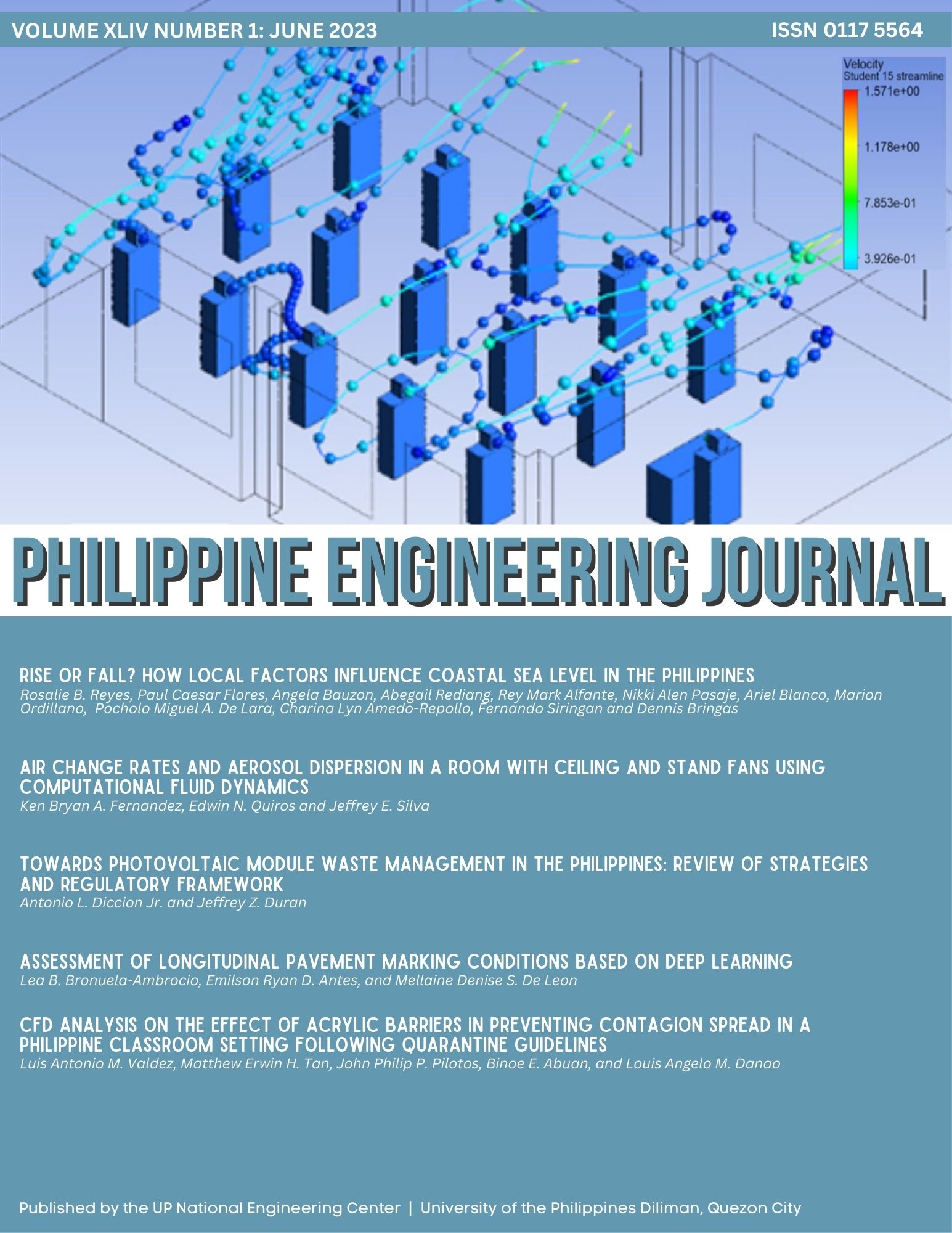Air Change Rates and Aerosol Dispersion in a Room with Ceiling and Stand Fans Using Computational Fluid Dynamics
Abstract
Previous study demonstrated the effect of a single fan in terms of air change per hour (ACH) and air evacuation rate in a room to mitigate airborne diseases. With the goal of finding cheaper and short-term solutions to replace expensive and long-term dedicated ventilation systems, this study performed computational fluid dynamics simulations to determine the effect of adding another fan (ceiling or stand fan) on the ACH, particle dispersion, and maximum particle time. Ten cases, 2 push-pull and 8 stand fan and ceiling fan combinations, were investigated in a room with two openings: a door and a window. Two aerosol source locations were considered: 1) the occupant near the door as the infector 2) the occupant near the window as the infector. Results show that the push-pull configurations generated higher ACHs (46.33 and 51.60) that are approximately near the sum of the ACH of push-only and pull-only cases. In addition, the stand fan with ceiling fan cases may or may not increase the ACH depending on whether the induced flow is in the same direction with the flow generated by the initially installed fan. Nevertheless, the intake stand fan placed at the window boundary coupled with ceiling fan facing the downward direction generated the highest ACH of 55.92. On the other hand, the addition of a fan generally increased the velocities inside the room, increasing the particle deposition on the surfaces rather than being evacuated outdoors. The FDI-FWE of the M1 case generated the highest particle evacuation rate of 14.96%. Lastly, the maximum particle time can decrease because of two reasons: 1) particles are easily deposited on the surfaces due to higher velocities, 2) particles are easily evacuated after generation, while it can increase when the particles enter a stagnation or recirculation zone.


